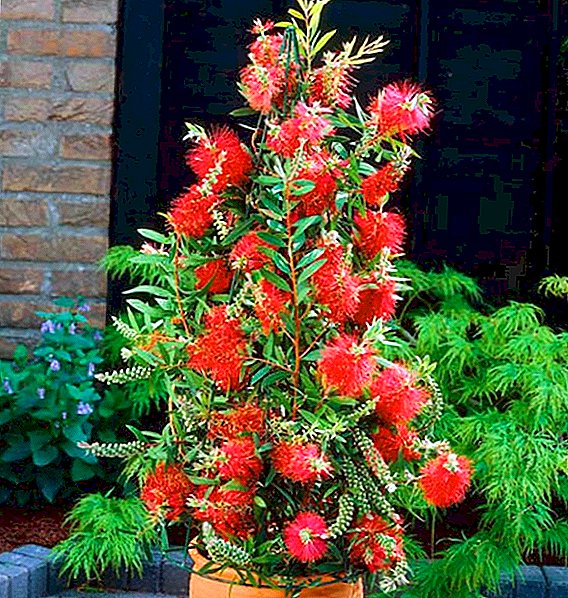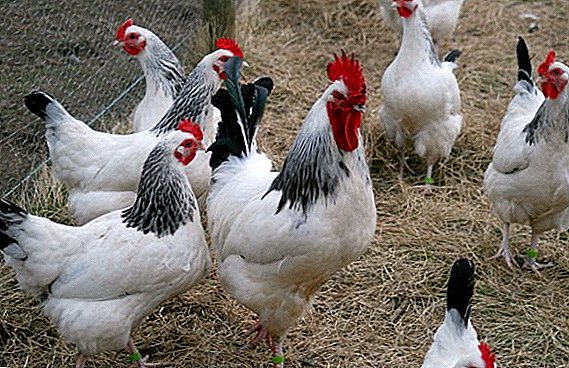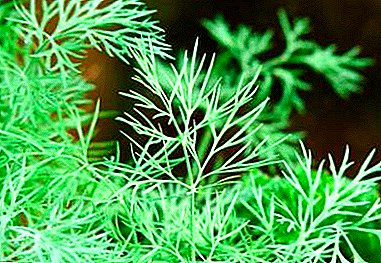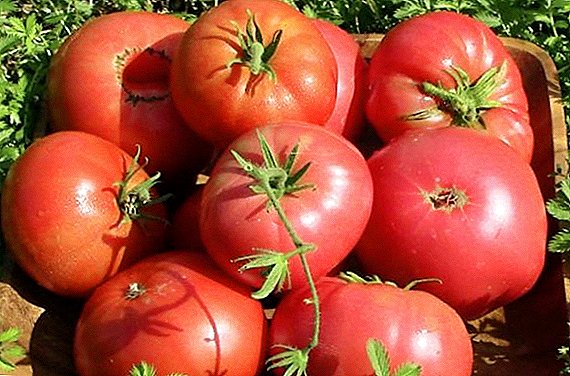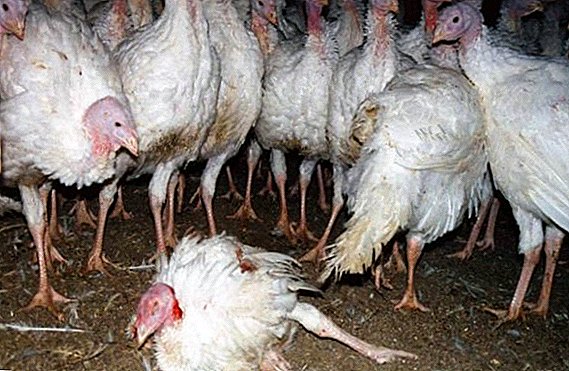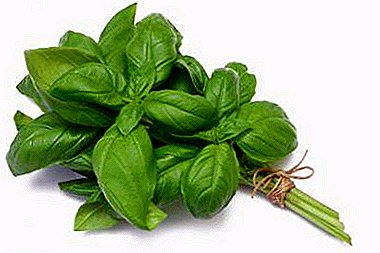
This seasoning is called "royal grass". The basilica is considered the birthplace of the Mediterranean, but the Europeans did not appreciate basil at first, but this spice immediately became popular in the Middle East and India.
Only in the XVI century in France, he was appreciated and began to serve dishes seasoned with basil.
In the article we will consider the most popular varieties of green basil with a photo, how to grow it at home and in the open field. And also we will tell about useful and medical properties of this plant.
What is this plant?
Basil is green and purple. Green varieties are most popular in European countries. In Russia, the Caucasus, Asia, purple basil is widespread, which, compared to green, has a stronger flavor, making it valued and used in the preparation of many oriental dishes.
The maximum aroma of spice green, as well as purple, exudes on the eve of flowering. The method of growing and caring for both plants is identical.
Photos of species and varieties
Then you can see the photos of the best varieties of green basil.
Clove
The highest among all varieties, used in salads and meat dishes.

Basilisk
Has the mixed aroma of pepper and cloves, is added to sauces and marinades.

Greek
The leader among green varieties, as it is used not only in cooking, but also as a decoration of the garden, has a slightly spicy classic aroma of basil.

Naughty boy
Plant with small leaves suitable for growing in flower pots.

Citric
Spice with bright green leaves and rich lemon aroma, suitable for making desserts and drinks.

Gourmet
It is added to salads, marinades, sauces, good for drying and freezing.

There are also caramel varieties, tonus, Thai rose, sacred.
Useful and healing properties
So, how is this type of plant useful? Green basil owes its aroma and beneficial properties to essential oils, which are found in large quantities in the plant. The leaves content of essential oils is 1.5%. Because of this, basil has such a pleasant aroma and delicate flavor. The spice contains camphor, lanalol, eugenol, otsimen and methylhavicol.
The leaves and stems of the plant contain tannins and minerals, glycosides, phytoncides, vitamins C, PP, B2, as well as rutin and carotene, polyunsaturated fatty acids, phytosterols, proteins and cellulose. Such a rich composition makes the plant very useful.
Harm and contraindications
The plant species under consideration combines not only benefits, but also harm. Basil has tonic properties, so it should be used with caution in people with vascular and heart problems, hypertensive patients and those who have had a heart attack.
Basil is contraindicated in the following diseases:
- thrombosis of the lower extremities;
- thrombophlebitis;
- vegetative vascular dystonia;
- diabetes.
It is not recommended to abuse the seasoning for pregnant women, but it is possible for nursing mothers if the child does not have a negative reaction to it. However, healthy people should not eat basil in large quantities.
Possible uses
What dishes can I add fresh?
 Virtually all parts of basil are used in cooking. Spice is an excellent addition to poultry meat, beef, lamb, as well as vegetable salads.
Virtually all parts of basil are used in cooking. Spice is an excellent addition to poultry meat, beef, lamb, as well as vegetable salads.
Green basil is used in canning vegetables, preparing marinades. It will perfectly complement the taste of pickled Bulgarian pepper, eggplant, cucumber, squash, mushrooms, and sauerkraut.
Leaves, stalks, basil seeds are added when preparing dessert drinks. And tea will be much more fragrant if, when brewing, add a couple of fragrant herbs to the teapot.
Tip! As a spice, basil is most appreciated as fresh and only the leaves of the upper part of the plant - they have the maximum aroma and delicate flavor.
What is boiled, dried or frozen?
As a seasoning, green basil is used fresh, dried and frozen.
Dried spice suitable for cooking meat and vegetable dishes, drinks. Frozen basil is used as well as dried - added to salads, meats, drinks, convenient for making homemade cosmetic masks.
Basil, filled with boiling water, is used for the preparation of tonic drinks and in home cosmetology. Boil basil is not worth it, because when cooking it loses all its useful properties.
Azerbaijanis use basil seeds, adding them to salads, drinks, soups, pates. It is necessary to add it to dishes at the very last moment - only this way basil will give its flavor to the maximum.
Experienced chefs recommend tearing fragrant grass with their hands, rather than cutting with a knife.
Application in cosmetology
From the plant extracts make camphor, eugenol and essential oil. In perfumery, these products are used as flavors.
How to grow spice in the open field and at home?
Growing green basil is easy. It grows remarkably well in the garden and in the flowerpot on the balcony or in the apartment.
Seeds
 Basil can be sown immediately in the ground, but do it no earlier than June, after holding the seeds in a growth stimulant solution. The first shoots appear in a week. With good care, the plant develops quickly, in 30-40 days it is already possible to take the first harvest.
Basil can be sown immediately in the ground, but do it no earlier than June, after holding the seeds in a growth stimulant solution. The first shoots appear in a week. With good care, the plant develops quickly, in 30-40 days it is already possible to take the first harvest.
Seedlings
 But it is better to grow green basil seedlings, which are prepared in advance, sowing the seeds in prepared boxes of soil. This can be done in the month of April in order to plant the plant on the garden with the onset of heat. After 7-14 days, seedlings appear, and when 4-6 leaves grow on the basil, they are planted in open ground. The first crop can be harvested after a month and a half, having pinched off two leaves from the top of the plant.
But it is better to grow green basil seedlings, which are prepared in advance, sowing the seeds in prepared boxes of soil. This can be done in the month of April in order to plant the plant on the garden with the onset of heat. After 7-14 days, seedlings appear, and when 4-6 leaves grow on the basil, they are planted in open ground. The first crop can be harvested after a month and a half, having pinched off two leaves from the top of the plant.
Briefly about leaving
Caring for basil consists in timely watering, fertilizing and loosening the soil. It is impossible to allow both the drying of the soil and its overwetting. In order for the plant to bloom as much as possible, it is necessary to remove all flower stalks - this will allow to harvest several times in one season.
Possible diseases
Due to the presence of essential oils, basil is resistant to pests and diseases, but sometimes it can affect:
- "blackleg";
- Fusarium;
- gray rot
Of the pests danger for basil is aphid, field bug and snail.
How to store?
The greatest value of the application in cooking are young basil leaves. For further storage and use in cooking cut the upper part of the plant, which is dried in the shade. Stored seasoning is stored in tightly closed glass or ceramic containers.
If fresh basil is used, it can be stored in the refrigerator, putting in a jar of water. Or cut the leaves, rinse them, put in a plastic bag, hermetically close and store in the refrigerator. Such basil can be stored for up to three days.
For the winter seasoning can be frozen. To do this, wash the leaves, dry them, put them on paper, and when they freeze, fold them into a hermetically sealed bag and store them in a freezer.
Basil is versatile and can be used simultaneously with other herbs, which will give the dishes a deeper flavor. It can be mixed with rosemary, parsley, thyme, marjoram, coriander, mint and tarragon.


